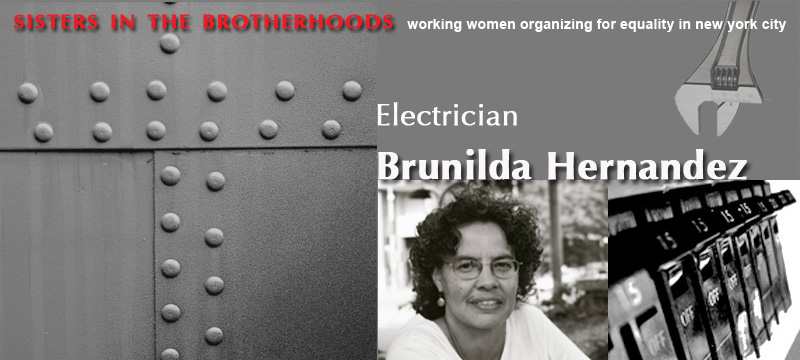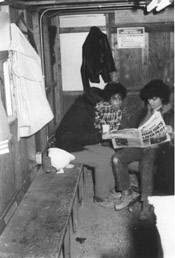 |
||||||
|
||||||
|
Brunilda Hernandez grew up in Manhattan’s Lower East Side. Her parents emigrated from Puerto Rico to the U.S. when they were teenagers Her father worked in a Tootsie Roll factory and later for a packaging company; her mother, a seamstress who worked in the garment district, was strongly pro-union.
Hernandez finished high school in 1977. She attended a semester of college but decided to leave school and look for work. She moved in with her good friend Evan Ruderman, who had attended the All-Craft Program, a CETA-funded initiative that introduced women to various trades. The two friends enrolled in the Recruitment Training Program (RTP), which prepared women and minority males to enter the trades. Through RTP, Hernandez and Ruderman learned that Local 3 was opening up to women. They began their apprenticeships in 1979 as members of second class of women to enter Local 3. Hernandez's first job was part of a major construction project at City College of New York. The only woman on the job, she tolerated the negative comments of her coworkers at first but eventually adopted a more assertive style.. Six months into the job she was paired with a verbally abusive journeyman, a drunk who deeply resented her presence on the crew. This difficult situation escalated until the two had a tense, frightening confrontation witnessed by the other men on the crew. Afterward the man was no longer assigned to her, and the harassment stopped. Like all apprentices in her field, she had to overcome the fear of working with high voltage. Determined to learn her craft, she quickly realized that she loved the work Each job during the apprenticeship was intended to teach a new set of skills. The union notified the apprentice when the time came to find the next job. After a year at the City College site, Hernandez went to a job located at Battery Park City. This time she would not be the only woman at the site: Ruderman and Laura Kelber also worked there. In 1989, after ten years in the trade, Hernandez enrolled in medical school but eventually switched to nursing. She works as a county public health nurse in Virginia providing maternal and children's health care in a clinical setting. Hernandez discusses a range of topics in her interview, from sexual harassment on the job to the satisfaction of the electrical trade to her 1987 trip to Nicaragua to help build a school. |
|||||
| ||||||
Copyright 2012 Jane LaTour/Talking History |
||||||
